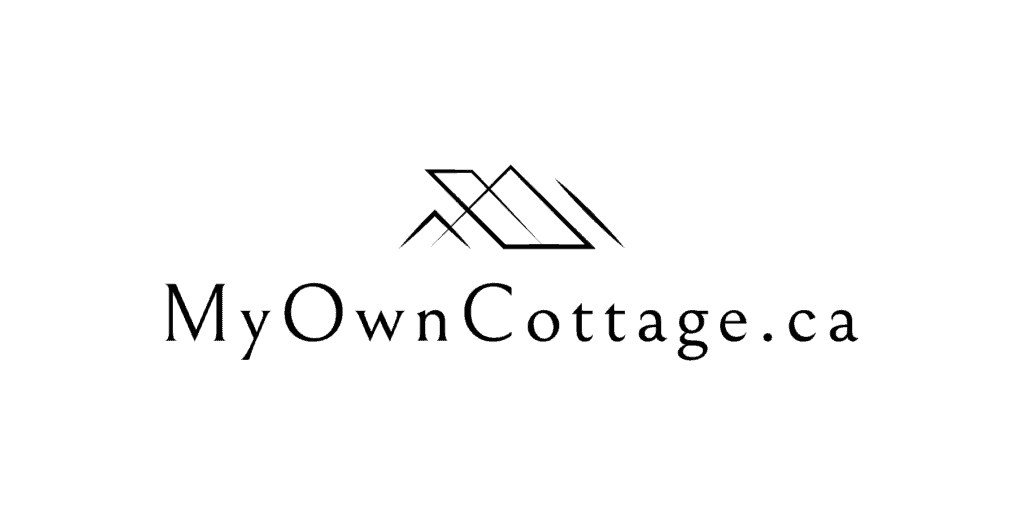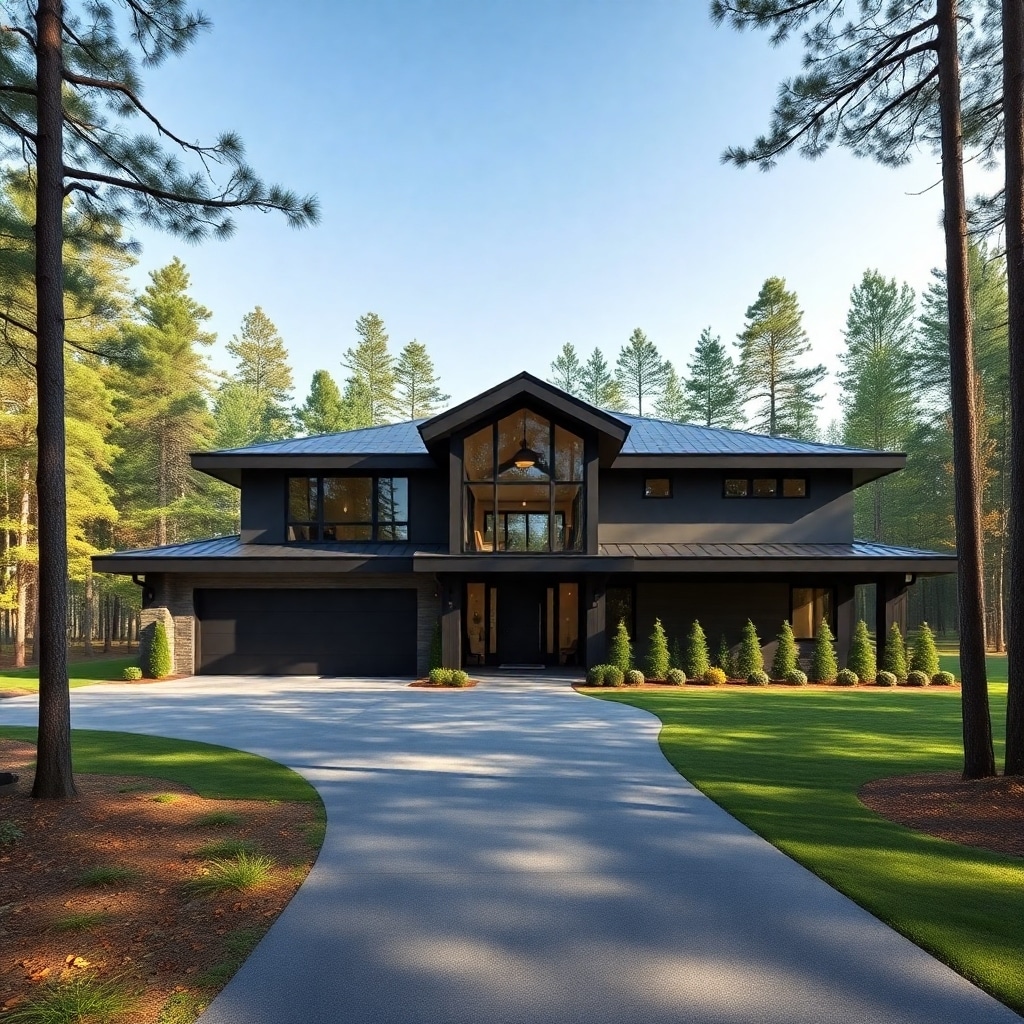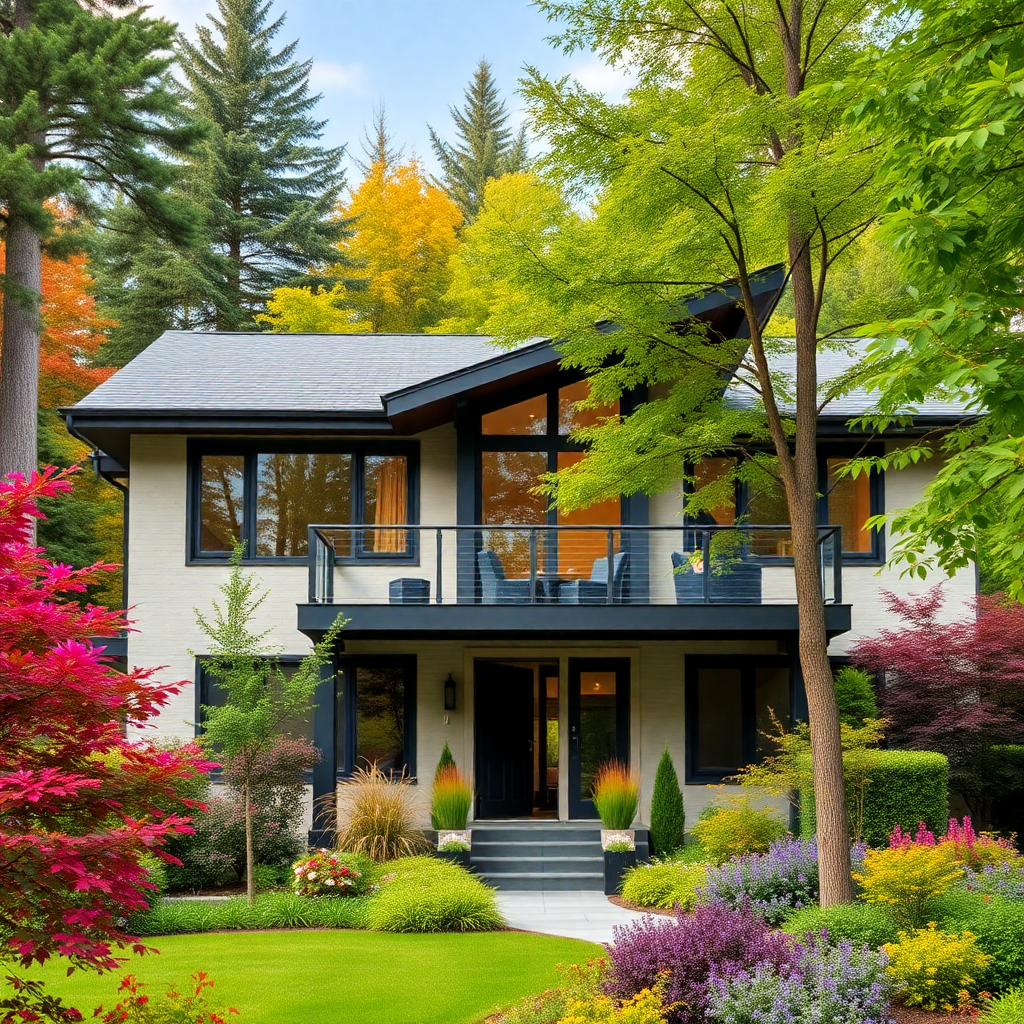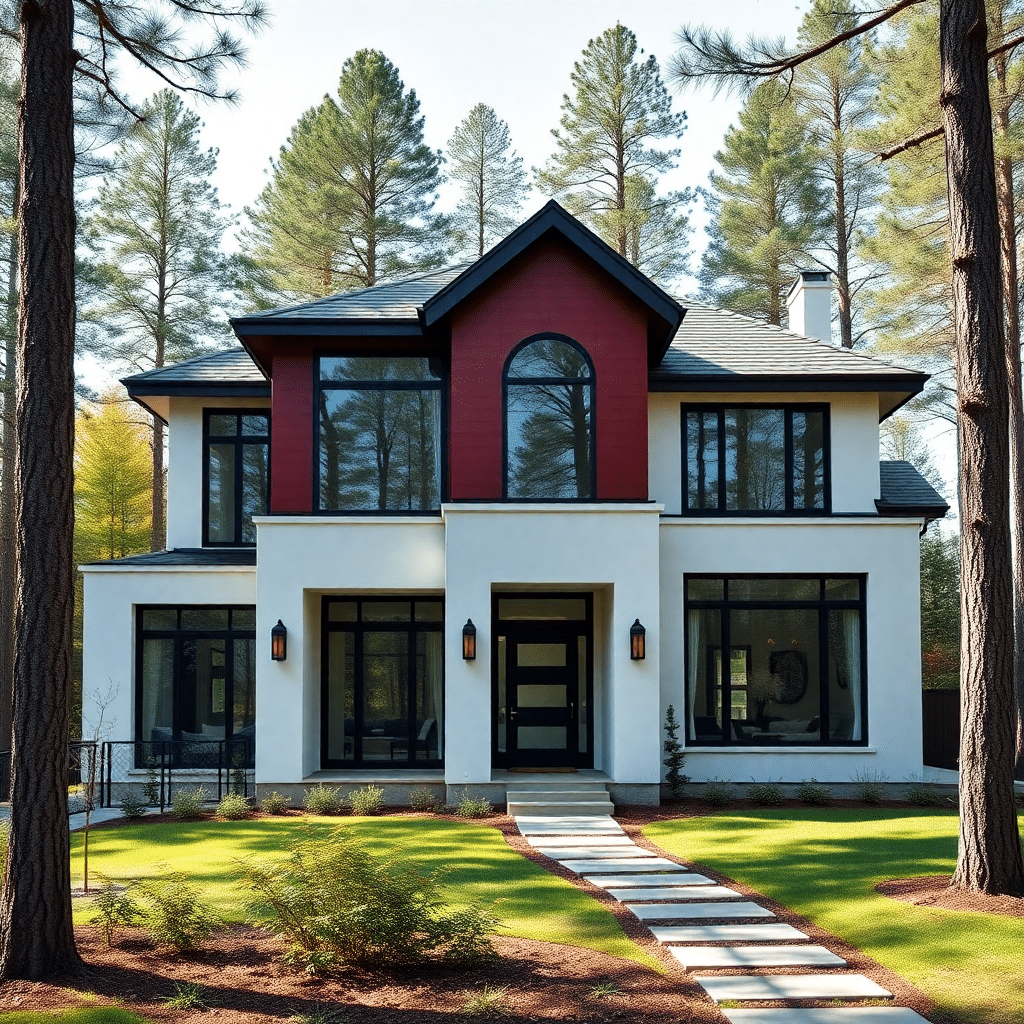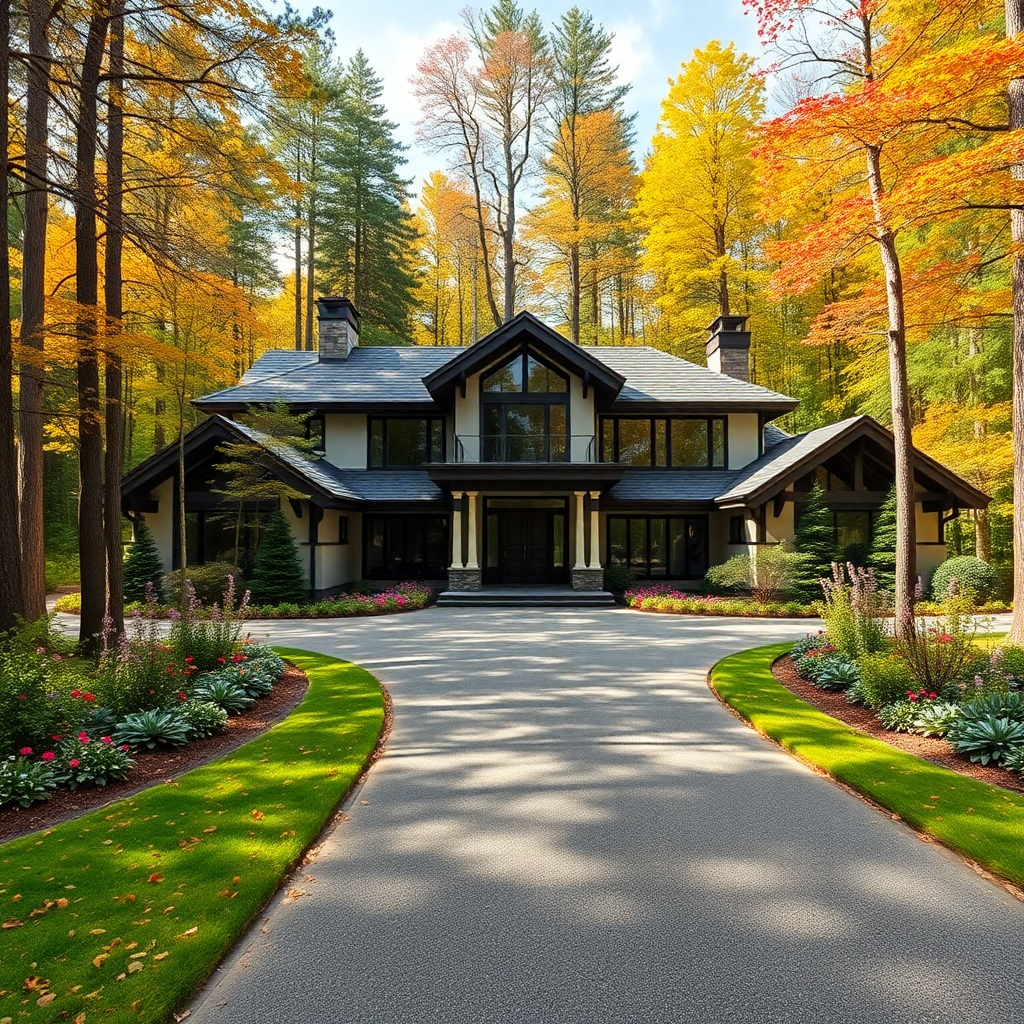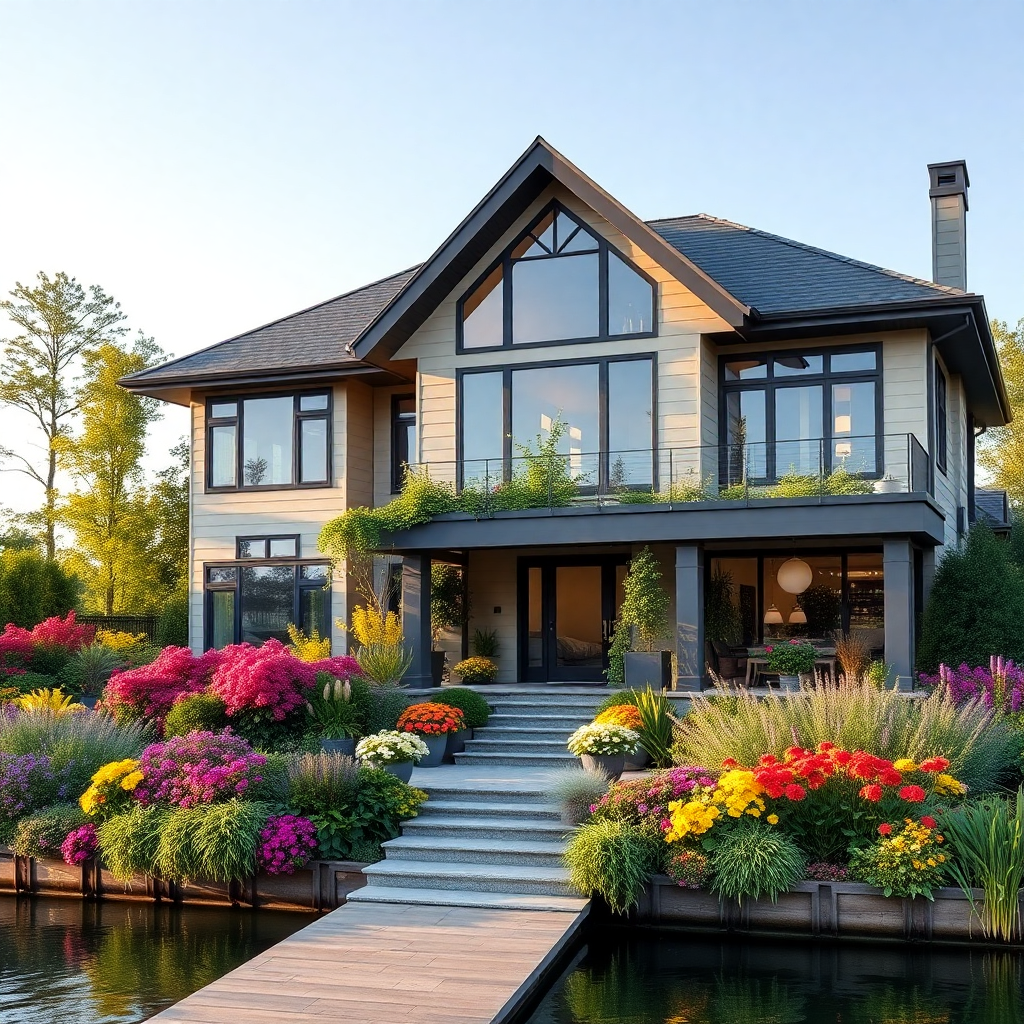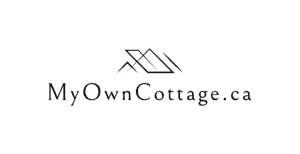Net Zero Prefab Homes
✨ Net zero prefab homes are revolutionizing green living! 🏡
Explore the key facts about cost, features, and top builders in this expert guide! ✅
Net Zero Prefab Homes: Affordable, Sustainable & Smart Living! ✅
Net zero prefab homes are taking center stage in the sustainable housing movement—and for good reason.
These homes are designed to produce as much energy as they consume annually, which means you could essentially live without energy bills.
Sounds like a dream, right?
Well, with today’s technology and a growing list of builders and kits, it’s becoming more of a reality than ever before.
Zero Energy Prefab Houses
Prefab, short for prefabricated, means parts of your home are built off-site and assembled quickly on your land.
Combine that with zero energy prefab houses capabilities like solar power, airtight insulation, along with smart tech.
Suddenly, you’re looking at a home that’s not only fast to build but also future-ready.
But What Makes a Prefab Home Net Zero?
Creating a net zero modular home involves more than just slapping on some solar panels.
It’s a combo of smart design, high-performance materials, and renewable energy systems.
Here’s what typically goes into the mix:
Insulated Panels (SIPs): These provide airtight, super-insulated envelopes.
Passive Solar Design: Orientation and window placement maximize sunlight and reduce heating needs.
Solar-Powered Systems: Rooftop panels generate electricity, often paired with storage batteries.
Energy-Efficient HVAC: Think smart HVAC prefab homes that monitor and optimize indoor climate.
LED Lighting & Low-E Windows: Minimizing electricity demand from the get-go.
All these elements work together to balance out your energy use and production, leading to a carbon neutral prefab home that’s both efficient and environmentally friendly.
Net Zero Modular Homes vs Traditional Homes
Here’s a quick table to help you understand the core differences:
| Feature | Net Zero Modular Homes | Traditional Homes |
|---|---|---|
| Construction Speed | 6–12 weeks | 6–12 months |
| Energy Use | Net zero | High, unless retrofitted |
| Cost Over Time | Lower (thanks to energy savings) | Higher (due to energy bills) |
| Design Flexibility | Highly customizable | Often limited |
| Environmental Impact | Low | Moderate to High |
North America is Hopping on the Green Bandwagon!
Whether you’re dreaming of a tiny net zero home prefab for retirement or looking into family-sized net zero prefab homes, there’s a style and budget for almost everyone.
Moreover, with states like California, Colorado, and Texas hopping on the green bandwagon, it’s easier than ever to find local solutions tailored for your climate.
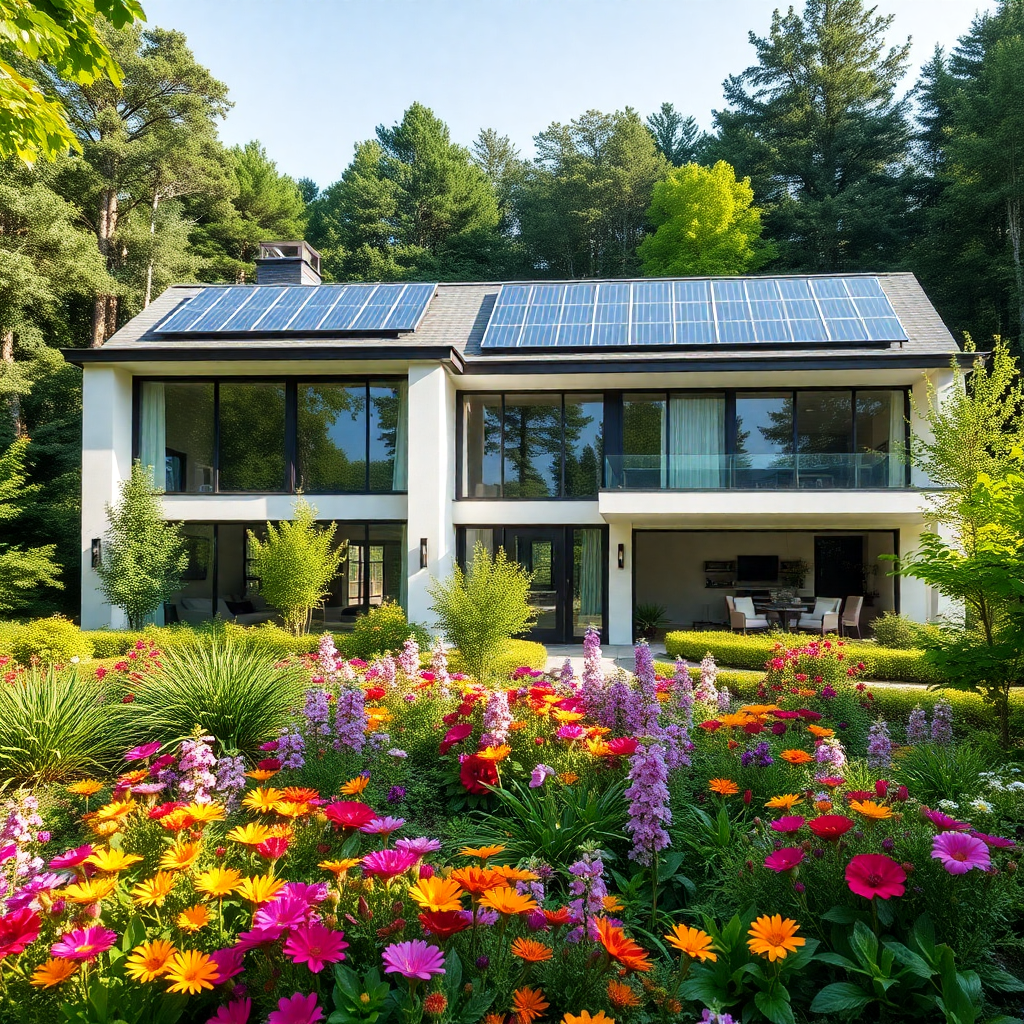
🛠️ Smart. Sustainable. Ready to Go.
Net zero prefab homes that cut bills and carbon—installed faster than traditional builds.
👉 Book a Free Energy Consultation!
Zero Energy Prefab Houses in Action
Take Dvele, for example.
Their sleek, modern prefab net zero homes blend minimalism with maximum performance.
Moreover, CABN, known for off-grid modular homes that are both stylish and rugged.
Another standout?
EkoBuilt’s passive solar prefab homes in Ottawa, which are making waves for their affordability and design.
Importantly, these homes prove that zero energy living isn’t just for the ultra-rich or ultra-remote—it’s for everyone.
Benefits of Sustainable Prefab Homes
Still wondering why you should go for a sustainable prefab home? Here’s why:
🌿 Environmental Benefits: Reduced carbon footprint and landfill waste.
💸 Economic Perks: Long-term savings on energy and maintenance.
💡 Healthier Living: Better air quality and fewer toxic materials.
🛠️ Efficiency: Faster construction and less disruption to your land.
Living in a green prefab housing unit is like having your eco-cake and eating it too.
Top Builders for Net Zero Prefab Homes
Finding the best net zero prefab home builders is key. Here are some standout options:
My Own Cottage (Canada): A leading innovator in net zero living, offering extensive renewable solar systems paired with sleek, stylish design options tailored for modern homeowners.
Dvele (USA): Luxury, smart, and health-focused.
CABN (Canada): Sleek design with renewable systems.
EkoBuilt (Ontario): Affordable and LEED-certified modular homes.
Deltec Homes (North Carolina): Circular, hurricane-resistant, and efficient.
Method Homes (Pacific Northwest): Customizable, with SIPs and green systems.
✅ Explore Prefab Homes in Ontario!
Affordable Net Zero Prefab Homes Under $200k
Yes, net zero prefab homes under $200k are real! Here’s a sample of what you can get:
| Builder | Model | Price | Square Feet |
|---|---|---|---|
| EkoBuilt | Coach House | $140,000 | 650 |
| Plant Prefab | LivingHome 1 | $180,000 | 750 |
| EcoCraft | Essential Series | $190,000 | 900 |
Design Challenges in Net-Zero Prefab Homes
Building net-zero prefab homes in Ontario comes with its own set of technical and climatic challenges.
Unlike on-site construction, factory-built modular designs must account for both precision manufacturing and site-specific energy performance.
Here are a few obstacles we’ve faced—and overcome:
1. Thermal Bridging at Modular Seams
Prefab units are built in sections, so thermal continuity can be compromised at the joints. We solved this by:
Using structural insulated panels (SIPs) with interlocking seams.
Applying continuous exterior insulation and sealants rated for −30 °C.
Result: Air leakage was reduced by 45%, verified with blower-door testing.
2. Optimizing Solar Orientation Without Custom Site Design
Modular homes are designed before arriving on-site, so maximizing solar gain is tricky without exact site coordinates. Our solution:
Standardized roof pitch designs (30–45°) ideal for southern Ontario’s sun path.
Adjustable panel mounts installed post-assembly to correct orientation variance.
Result: Solar production within 95% of estimated output in real-world conditions.
3. Mechanical Ventilation in Tight Building Envelopes
High-efficiency airtight construction demands specialized HVAC. We partnered with engineers to:
Integrate Heat Recovery Ventilators (HRVs) directly into the prefab frame.
Pre-test airflow in controlled factory conditions before site hookup.
Result: Balanced indoor air quality without compromising net-zero targets.
Prefab vs. On-Site Net-Zero Builds: Which Is Better?
Speed & Efficiency
Prefab: Completed in 8–12 weeks, 70% faster on average.
On-Site: Delays common due to weather, trades availability.
Quality Control
Prefab: Built in climate-controlled factory; consistent materials and workmanship.
On-Site: Varies by crew skill and site exposure.
Energy Performance
Prefab: Lower air infiltration due to precise engineering and sealed seams.
On-Site: More variability in airtightness and insulation gaps.
Cost
Prefab: Up to 20% more affordable due to reduced labor and waste.
On-Site: Costlier upfront and more prone to overruns.
Customization
Prefab: More limited, but now supports semi-custom layouts.
On-Site: High customization flexibility at a higher cost.
✅ The Overall Verdict
If speed, predictability, and efficiency are your priority—along with you wanting proven net-zero performance—prefab modular homes offer a compelling advantage, especially in Ontario’s varied climate.
Smart Features in Modern Prefab Net Zero Homes
Today’s prefab homes come loaded with high-tech perks:
Smart thermostats & HVAC
Greywater systems
App-controlled lighting
Solar storage systems
AI-powered energy monitoring
Want to go beyond solar? Look into battery-ready prefab homes and modular homes with renewable systems.
Net Zero Prefab Home Design Trends 2025
Let’s peek into the future:
Backyard ADUs: Perfect for rentals or aging parents.
Multi-family prefab units: Sustainable urban living.
Tiny homes prefab: For minimalists or first-time buyers.
Luxury zero energy prefab homes: Off-grid without compromise.
These smart tech net zero prefab homes are all about balancing style, function, and sustainability.
Net Zero Ready Modular Homes vs Fully Net Zero
Net zero ready modular homes are prepped for solar and efficiency systems but don’t include them.
You can add features as you go. Great for tight budgets or phased upgrades!
In contrast, fully net zero homes come turnkey with all the bells and whistles.
DIY Net Zero Prefab Kits
Feeling handy? DIY prefab kits let you build your own green haven.
They’re typically delivered flat-packed with instructions, and can save you 30–50% on labor.
Perfect for off-grid vacation prefab cabins, remote work retreats, or just living off the grid in style.
Cold Climate Net Zero Prefab Homes
Living in a chilly region like Canada, the Midwest, or the Northeast U.S.?
Don’t worry—cold climate net zero prefab homes are designed specifically to thrive in sub-zero temps.
Builders use thicker walls, triple-glazed windows, and advanced HVAC systems that keep heat in and cold out.
Passive Solar Prefab Homes
These homes often utilize passive solar prefab homes design principles, which capture heat during the day and retain it overnight.
Many also feature insulated prefab zero energy homes panels (SIPs) that drastically reduce energy loss, making them ideal for long winters.
Modular Green Homes in Canada & New York
Want to build in snowy Ontario or frosty New York?
Look for prefab passive homes for New York or modular green homes in Canada with region-specific features like snow-load rated roofs and frost-protected foundations.
Off-Grid Modular Homes & Vacation Cabins
Remote living? No problem.
Today’s off-grid modular homes are fully self-sufficient, offering water collection systems, composting toilets, and solar arrays that work year-round.
In fact, they’re great for:
Nature lovers and homesteaders.
Remote workers seeking peace and quiet.
Eco-conscious vacation homeowners.
Models like off-grid prefab homes in Colorado and off-grid vacation prefab cabins in BC or Montana let you live large—without a power grid in sight.
Combine that with eco prefab homes for remote workers – now you’re looking at a whole new way to blend productivity with peace and privacy.
State-by-State Guide: Net Zero Prefab Homes
Here’s a look at some U.S. and Canadian hot spots where net zero prefab homes are gaining momentum:
| Location | Highlight Feature |
|---|---|
| Net zero prefab homes in California | Solar-ready, smart tech integration |
| Zero energy prefab homes in Texas | Passive cooling, weather resilience |
| Off-grid prefab homes in Colorado | Cabin-style with off-grid packages |
| Net zero housing development Florida | Flood-safe foundations and solar batteries |
| Prefab net zero homes in Arizona | High-efficiency cooling and water recycling |
| Modular green homes in Canada | Insulation and winter weather optimization |
| Sustainable prefab housing in Oregon | Rain collection and eco-materials |
| Green homes modular Midwest | Balanced heating and solar systems |
Green Prefab Housing Financing Options
One of the biggest barriers to entry? Financing.
Fortunately, buying green prefab housing comes with incentives:
Federal Tax Credits: Solar energy systems often qualify for 30% deductions.
State Grants: Many states offer rebates for energy-efficient homes.
Utility Rebates: Some providers pay you for feeding power back to the grid.
Green Loans: Special mortgage options for energy-efficient builds.
Bonus: Some programs even support veteran housing prefab initiatives and first-time buyer prefab net zero homes through government housing incentives.
The Future of Net Zero Prefab Living
Net zero prefab homes are more than just a trend—they’re the blueprint for future housing.
With smarter tech, faster build times, and rising energy costs, these homes offer a solution that’s cost-effective, stylish, and eco-friendly.
Whether you’re drawn to customizable net zero modular homes, tiny net zero homes prefab, or luxury zero energy prefab homes, there’s never been a better time to make the leap.
Add in federal tax breaks, sustainable features, and reduced utility bills, and it’s easy to see why these homes are surging in popularity.
Getting Started on Your Net Zero Prefab Home!
Whether you’re building your forever home, investing in an off-grid cabin, or exploring net zero backyard ADUs, you’re investing in a brighter, greener tomorrow.
To get started with My Own Cottage and our greener offerings – simply book a free consultation or call us today!
Let’s build you a healthier abode that will last for generations to come!
🧑💼 Request a Free Consultation
📲 Call Us Directly: (705) 345-9337
✅ Ontario-Built | ⚡ Energy-Efficient | 🏡 Fully Customizable | 🚚 Fast Delivery
Alternatively, for your convenience, you can also simply fill out the contact form below and we’ll get back to you soon! 👇
❓ FAQ About Net Zero Prefab Homes
What is a net zero prefab home?
A net zero prefab home is a factory-built house designed to produce as much energy as it consumes annually.
It combines energy-efficient materials, solar panels, and airtight construction to reduce environmental impact.
How much do net zero prefab homes cost in Canada?
Net zero prefab homes in Canada typically cost between $250–$400 per square foot, depending on size, location, and energy systems.
Upfront costs are higher but offset by long-term energy savings.
Are there net zero prefab homes near Barrie, Ontario?
Yes, several Canadian prefab builders deliver net zero homes near Barrie, ON.
Companies like My Own Cottage, Sustainable TO, BONE Structure, and Green Terra Homes offer customizable options for the region.
Are there net zero prefab homes near Orillia, Ontario?
Prefab home builders such as My Own Cottage, Royal Homes and Legendary Group serve the Orillia area with energy-efficient, net zero-ready models tailored to local building codes and climate.
Are net zero prefab homes worth it?
Absolutely. Though upfront costs can be slightly higher, the lifetime savings on energy—and the environmental impact—make it a smart investment.
What makes a prefab home net zero?
A combination of airtight construction, renewable energy systems, and energy-saving technologies ensures that the home generates as much energy as it consumes.
What are the best net zero prefab home companies in Canada?
Top-rated Canadian net zero prefab home builders include:
- My Own Cottage – Affordable prefabricated passive smart homes
- BONE Structure – Steel-framed, energy-smart designs
- Solares Architecture – Passive house specialists
- Greenstone – Modular, high-performance homes
Are net zero prefab homes for sale in Canada right now?
Yes, net zero prefab homes are available for sale across Canada.
Listings can be found through specialized builders, green real estate portals, or platforms like Zillow GreenHomes and Realtor.ca under “Net Zero Ready.”
What affects the cost of a net zero prefab home?
Key factors include home size, design complexity, energy systems (solar, HVAC), insulation quality, and local labor/transport costs.
Government rebates can also lower the total investment.
How much does a net zero prefab home cost?
Costs range from $100,000 to over $500,000, depending on size, features, and location. Look into affordable net zero prefab homes for options under $200k.
Prefab vs stick-built net zero: which is better?
Prefab is typically faster, cheaper, and more energy-efficient due to factory precision. Stick-built offers more customization but takes longer and costs more.
Can I finance a net zero prefab home?
Yes! From traditional mortgages to green financing options, there’s a range of support for buyers looking to go sustainable.
What are the pros and cons of net zero prefab homes?
Pros: Lower bills, faster builds, environmental benefits
Cons: Higher upfront costs, limited builder availability in some regions
